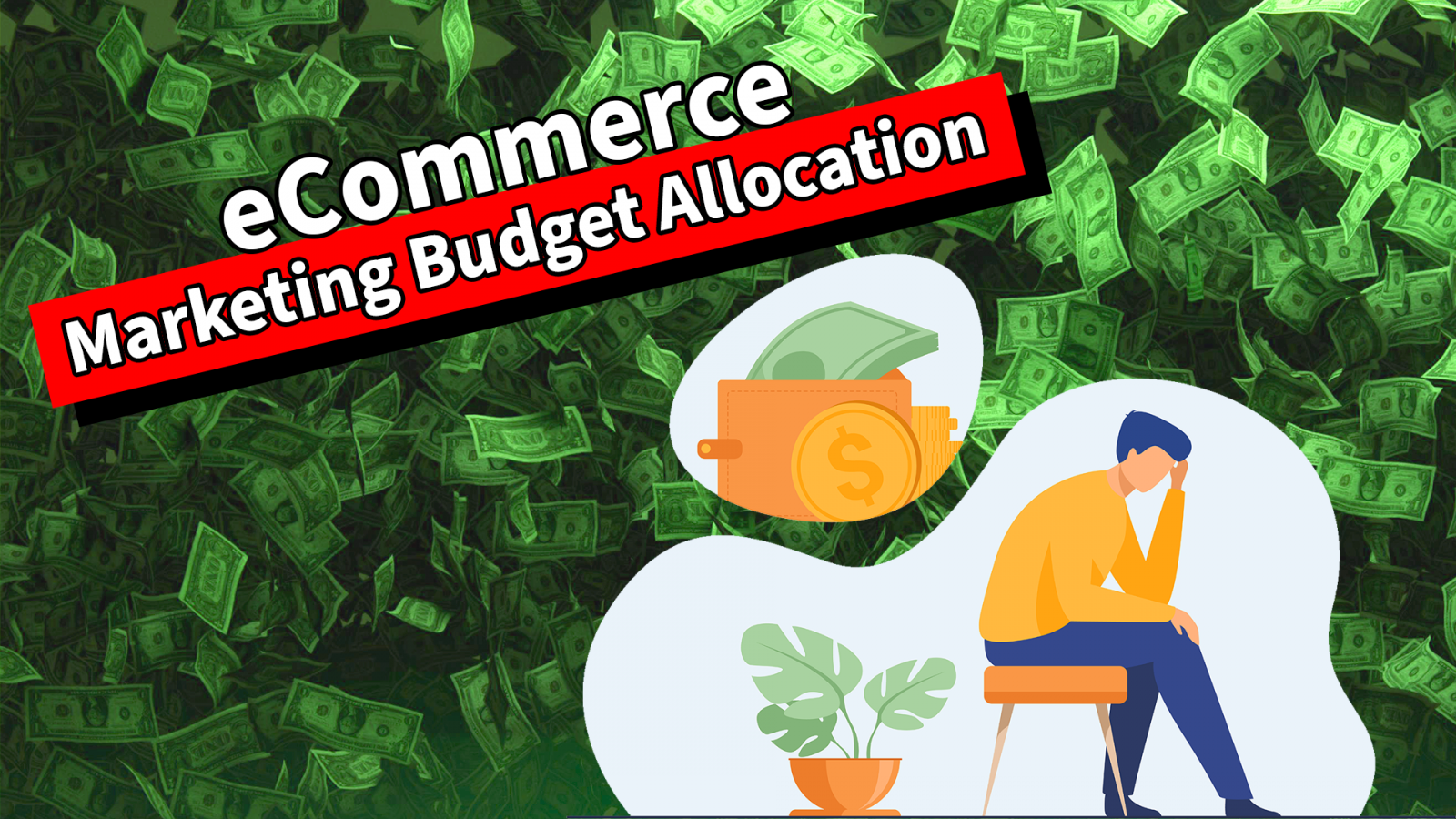Clients often ask, “Well, how much should I be spending on Facebook? Or how much should I be spending on Google? How much should I be spending on SEO?” This depends on your existing brand, what stage you’re at as a company, whether you’re a startup or established.
Where to Invest Marketing Budget on New Websites
A client may say “I’m just starting out and I’m willing to invest the 12 or 20% of either my existing revenue.” If they’re just starting out, they might not really have any revenue. They may invest 12% of projected revenue into a marketing strategy right now.
What do you suggest they do from an allocation standpoint? What channels should they use?
Is your website already in a position to make the most of your traffic? Without optimization for conversions, you won’t see the return of investment that you need from all of these marketing channels. The catch-22 is you need that traffic to determine where these areas of improvement lie. Even so, you can employ those best practices. If you’re a website that’s just starting out and you need to start generating revenue right now, then you need to study paid search and social media marketing. Both will generate ample traffic.
Your site needs to be optimized for conversions. That’s an ongoing process. However, if you’re not generating any traffic right now, you can’t look at the data to determine what needs to be optimized for conversions.
Consider Facebook. With this channel, you can get anywhere between 3 to 13 cents for cost-per-click on a traffic campaign. It might not generate many conversions. However, it’s going to give you the data that you need to then optimize. Use that audience to re-target for conversions, and you’ll see a much better rate.
Generate revenue as soon as possible. You’re a brand new site. SEO and content marketing take time. You need to pay to play. The money should be geared towards Facebook, Google, YouTube, or other potential channels to generate some revenue. The resulting cash flow allows you to reinvest, buy more products, or stay operational. So you hit it on the head right there,
Now, does that mean that I shouldn’t allocate any resources to SEO?
No. Marketers know that SEO has the highest ROI of any marketing channel online. The problem is that you need to look at your marketing as an investment rather than as a cost. This strategy involves building momentum upon the work that you’ve already done. You’re not going to see ROI initially. Sometimes the investment takes six months for a return.
Sometimes it can take twelve to eighteen months to generate significant revenue from an organic search campaign. If you’re starting a business, it’s because you believe in an idea and are investing your time and your resources to grow and build. Look at your marketing strategy the same exact way. You need to invest into your brand through marketing and especially with SEO, if you truly believe that your brand is going to be around years from now. Construct your organic visibility because that’s when you’re truly going to reap those benefits.
You have to look at marketing as an investment, not as an expense. You might allocate more starting off to a paid approach and strategy to try to generate quick revenue. Nevertheless, SEO needs to be implemented from day one. Both of these strategies should be running in parallel.
At one point, you’re going see that the traffic that you’re getting from paid search and an organic search is going to come to a crossroad. You’re going to start to get the same exact amount of traffic both.
What decision do you need to make?
Decide which option needs more investment. Then you’re actually in a much more comfortable situation. You can look at your marketing budget and say, “How is my conversion rate from Google compared to that from Facebook?”
Obviously organic tends to have a much higher conversion rate because that has the search intent. They’re looking for a product like yours. That’s always going to have the highest conversion rate.
Once you determine this, you can decrease some ad spend and allocate that towards building more content and pushing more backlinks to increase your organic visibility. From start to finish, your PPC and SEO should be running simultaneously. When you generate more traffic through your organic visibility and search, then you can decrease ad spend. Allocate a little bit more to your SEO strategy, or you can increase.
What is an ideal allocation for marketing spend and SEO?
This depends on the brand, your customers, the conversion rate is, and return on ad spend. If you can increase your ad spend and maintain the same return, invest as much as you can. Take all of that into consideration.
Create an email marketing funnel. Look into software like Klaviyo, whether you’re just starting out or you’re already a well-established website. The pricing goes on a sliding scale. You’ll see a good return on Klaviyo.
Generate those email lists. Establish them for the long term and capture emails from website visitors who opt into them. If you don’t have that in place and you start running paid campaigns, you’re getting tons of visitors to your site placing orders on your site, but you’re not capturing any of these emails. As a result, you leave money on the table.
If you’re a brand new or existing eCommerce brand that has been running campaigns for quite some time, the Optimum7 team can help when you’d like someone to take a look and assess your marketing budget and where you’re allocating spend. The team can optimize your ad spend or eCommerce marketing budget. Let us know, we’d be more than happy to help.
Start Building a Marketing Strategy that Works for Your Budget





